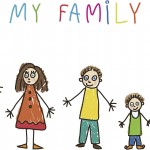
Untreated dental caries in primary teeth is very common and in addition to adverse effects on the child from pain and infection it can have adverse effects on the wider family. For children who, because of age, anxiety or extent of treatment required cannot cope dental general anaesthesia (DGA) is an option. While DGA facilitates treatment, it is also important to assess the wider impact on the quality of life on children and their families.
The aim of this study was to assess the effect on the family impact scale (FIS) sections of quality of life measures following children’s dental treatment under general anaesthesia.
Methods
Searches were conducted in the PubMed, Medline, CINAHL, Cochrane Library, and Web of Science databases. Studies involving patients aged between 0-16 yrs of age having DGA where Early Childhood Oral Health Impact Scale (ECOHIS) and Child Oral Health-Related Quality of Life (COHRQoL) pre- and post-operative assessments were made were considered. The main outcome was changes in the family impact scale (FIS) section presented as mean difference (MD). Study quality was assessed by two reviewers using the Newcastle-Ottawa Scale for cohort studies.
Results
- 21 studies were included.
- Only 5 studies indicated a reason for DGA
- For ECOHIS (10 studies)
- The age range of the patients was 1 to 6.5 years, with follow up times ranging from 1- 24 weeks.
- The overall reduction in FIS scores ranged from 31.0%-77.9% with a positive MD = 1.52 (95%CI; 1.15-1.89) indicated a favourable outcome with DGA.
- The reduction in the parental distress scores ranged from 37.3% to 84.1%; MD =1.41 (95% CI; 1.12- 1.70).
- The reduction in the family function scores ranged from 17.9% to 90.5%; MD =1.21 (95% CI: 0.52-1.89).
- For COHRQoL (12 studies)
- The age range of the patients was less than 4 years to 11.5 years with follow up times ranging from 1- 48 weeks.
- The overall reduction in the FIS scores ranged from 32.9% to 84.5%; MD =1.10 95%CI; 0.68-1.52).
- The reduction in the parental distress scores ranged from 42.9% to 73.2%; MD = 1.03 (95% CI: 0.22-1.84).
- The reduction in the family function scores ranged from 49.5% to 87.4%; MD = 1.19 (95% CI: 0.73-1.64).
- The reduction in the family conflict scores ranged from 46.7% to 80.4%; MD = 0.64 (95% CI: 0.39-0.88).
Conclusions
The authors concluded: –
Dental treatment with general anaesthesia for children had a significant positive impact on parental emotions, activity, and conflict. Following DGA, there was significant improvement in the FIS, with large MD.
Comments
Previous review by Park et al (2018) and Knapp et al (Dental Elf -28th Oct 2016) have suggested improvements in children’s oral health related quality of life following treatment under DGA. This review focuses on the wider family impact demonstrating a positive impact following DGA. While these findings a useful for those providing and developing services for children it is important to note that these findings only represent short term impact on children and families and information on longer term outcomes would be helpful. In addition it is worthwhile remembering that the underlying problem is the a failure to prevent and or control dental caries so developing services and support to assist children and families at risk is also needed.
Links
Primary Paper
Park JS, Anthonappa RP, King NM, McGrath CP. The family impact of dental general anaesthesia in children: A meta-analysis. Int J Paediatr Dent. 2018 Nov 23. doi: 10.1111/ipd.12452. [Epub ahead of print] PubMed PMID: 30468690.
Other references
Park JS, Anthonappa RP, Yawary R, King NM, Martens LC. Oral health-related quality of life changes in children following dental treatment under general anaesthesia: a meta-analysis. Clin Oral Investig. 2018 Nov;22(8):2809-2818. doi: 10.1007/s00784-018-2367-4. Epub 2018 Feb 9. PubMed PMID: 29427008.
Dental Elf -28th Oct 2016
